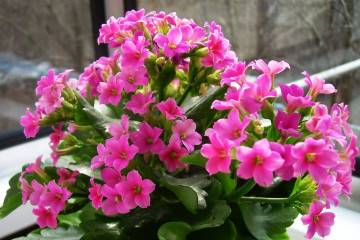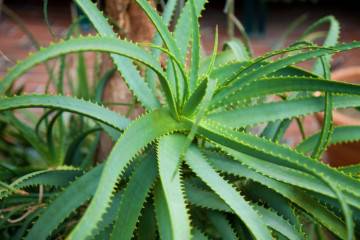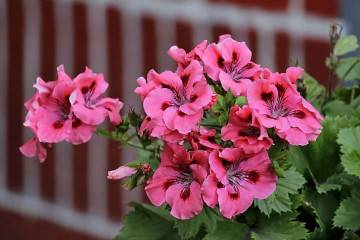Diseases of the money tree - how to resuscitate
Content:
The money tree (bastard) is very popular with many people. It is unpretentious and does not require special care. With the right attitude, it can even bloom at home. Unfortunately, the plant is sometimes exposed to various diseases and is affected by harmful insects.
How many years does the money tree live, what can harm it
The scientific name for the money tree is crassula. The plant is distinguished by a thick stem and small leaves - fleshy and round in shape.
The lifespan of a culture depends on its care. Subject to all the features of agricultural technology, the succulent is able to live for more than half a century, constantly increasing in size. However, on average, the money tree remains in the family for 30 years.
Major succulent diseases and home therapy
Unfortunately, Crassula, like many other plants, can be subject to various pathologies. Many diseases of the money tree arise from non-compliance with the rules for caring for a flower. Therefore, questions often arise about why the fat woman has soft leaves and what to do so that they do not fall off.
Silver bloom
A silvery coating on green leaves arises as a response to stress. Often the reason is non-compliance with the irrigation regime and a sharp change in temperature downward. The manifestation of the symptom is also possible when the lighting conditions change.
There is only one treatment in such a situation - to wait for the plant to recover on its own. Plaque is dead cells that appeared on the surface of the leaves after a stressful situation. Gradually, it will disappear on its own.
Green bumps
The appearance of green pimples on the leaves is possible for 2 reasons - an excess amount of moisture and damage to the scabbard. To determine accurately, it is recommended to carefully examine the plant. If a pest is damaged, a suitable treatment is started (it will be discussed below).
If the reason is frequent watering and stagnant moisture, then you need to adjust the watering - they should not be more than 2 times a week.
Red or purple color
Sometimes the leaves of the fat woman turn red or acquire a purple tint. This happens for several reasons:
- constant contact with direct sunlight;
- lack of fresh air;
- lack or excess of nutrients in the soil.
It is possible to get rid of redness if you determine a different location for the succulent and often ventilate the room. Top dressing is carried out with special fertilizers for succulents, preparations are prepared according to the instructions for use. With proper care, the plant cannot turn red.
Leaves wither and turn yellow
Sometimes you can notice that the leaves of the bastard become lethargic and acquire a yellow tint, become wrinkled and fall off.This happens more often due to the fact that the plant is hot.
During the summer months, the plant will be more comfortable outdoors than indoors. It is important to ensure that there are no drafts and direct sunlight.
The tree is losing its leaves
Falling foliage on Crassula is noted quite often. In advanced cases, only a few things may remain on the stem. The reasons for this phenomenon are:
- natural state - old and lower leaves begin to fall over time;
- excess moisture in the soil - then the leaves can wrinkle and dry out;
- use for irrigation of cold water;
- lack of moisture - all life processes slow down.
Normally, the bastard sheds its foliage intensively in the winter. This is necessary for the renewal of the plant. In such a case, there is no need to take any action, the young leaves will grow on their own after a while.
If a disturbed irrigation regime has become the reasons for the fall, then it is recommended to control this process and normalize it.
Brown or brown spots
The appearance of brown or brown spots on the plant, which then turn black, indicates that the plant has undergone fungal diseases. This happens as a result of severe waterlogging or at too cold temperatures.
The medicinal solution is prepared according to the instructions and the plant is treated. If necessary, the procedure is repeated. Sick and wrinkled leaves need to be removed.
Often, this symptom speaks of a lesion with a scabbard, which is also disposed of with the help of specific means.
Root or stem rot
Decay of the stem and roots occurs with constant moisture and low air temperature. In general, the fat woman does not need frequent irrigation. The plant accumulates moisture in its leaves. Therefore, frequent watering often leads to the occurrence of a decay process and the plant dies.
In this case, wilting of foliage is noted, an unpleasant smell of rot from the soil, which the owner of the plant can easily feel.
To cope with the problem is possible only by transplanting the flower into another soil and pot.
Stagnant growth
Often, a fat woman planted for a long time simply stops growing and freezes in one place. There are several reasons for this condition:
- unsuitable small pot;
- no transplant for a long time;
- damage by harmful insects;
- lack of nutrients.
Actions are carried out after the reason for the lack of growth in the plant is precisely determined. First of all, it is recommended to transplant the fat woman into a larger pot. During the process, the plant is carefully examined for rotting and pest damage. If necessary, they are treated with fungicidal preparations or insecticides.
Soft and thin leaves
Often in a fat woman, the leaves become thinner and softer. The reasons are excess moisture, insufficient lighting, or inappropriate air temperature.
What if the leaves of the money tree become soft and lethargic? First of all, try to determine the cause of this phenomenon. In case of excess moisture, it is recommended to transplant the plant, treat it with special preparations. The pot is rearranged in a bright place, protecting it from direct sunlight.
White dots
The appearance of white dots on foliage indicates excessive moisture and watering. Being in a room with high humidity also leads to a similar problem. Thus, the flower gets rid of excess water through the pores in the foliage.
To eliminate the problem, it is recommended to reduce the number of watering and spraying, to rearrange the plant in a drier room. It is imperative to subsequently monitor the irrigation process.
Leaf burn
The appearance of yellow or brown spots on the foliage indicates possible burns. They arise as a result of finding a flower in direct sunlight. The problem may appear due to the fault of the owner, who provokes moisture to enter the leaves in the sun.
The affected leaves are removed, and the plant itself is rearranged to another place with diffused light or shaded.
Small leaves
The fat woman loves diffused light. With its lack and lack of nutrients, the leaves on the plant become small. You can cope with the problem by rearranging the plant to a more suitable place or feeding it with special fertilizers for succulents.
The plant does not like direct sun and frequent abundant watering.
Crassula pests and how to deal with them
Crassula is sick not only from improper care, but can also be affected by various harmful insects. If signs are found, treatment begins immediately so that the plant does not die.
Mealybug
A sign of a mealybug affection of the fat woman is the formation of white spots, similar to cotton wool, on the leaves and other parts of the flower. The cause of the appearance of the pest is considered to be a strong waterlogging of the soil. Most often, the insect reproduces in high humidity and high room temperatures.
At the initial stage, you can get rid of the pest with soapy water or other folk remedies, wiping the sites of infection with them.
In a neglected situation, insecticides are used - Aktara, Fitoverm, Iskra.
Shield
The appearance of a sticky liquid on the trunk, branches and leaves of a plant indicates a possible lesion with a scab. In this case, the fat woman's leaves rot and fall off.
The scale insect often develops on weak plants growing in soil with an excess of nitrogen. It is possible that insects will damage flowers that are poorly looked after.
You can cure an unpleasant insect as follows:
- Remove the scabbard with your hands, scraping it off the leaf plates and other parts of the plant.
- Rubbing the affected areas with alcohol, vinegar solutions, tincture of pepper or garlic, which you can make yourself.
- Using special insecticidal preparations.
It is recommended to closely monitor watering and temperature conditions in the room where the plant is located.
Root worm
The pest infects the root system of the bastard. Unfortunately, infection can only be detected during plant transplantation. Whitish insects and small growths will be noticeable on the roots.
The plant is thoroughly washed under running water with a temperature not exceeding 50 degrees. Then, twice a week, the root system is treated with a solution of Fufanon or Actellik.
Spider mite
A symptom of crassula lesion with a spider mite is the presence of a white spider web on the leaves. The insect is red or gray in color, but it is very small, so it is quite difficult to detect it.
The leaves of the plant turn yellow, become wilted, brown spots appear on them, which gradually begin to turn black.
You can cope with the pest by spraying the plant and wrapping it in plastic. Such an action will lead to a sharp increase in humidity, which the insect does not like.
You can also eliminate the parasite with the help of specific insecticides - Fitoverm, Aktara, Aktellik are suitable.
How to reanimate a fat woman after an illness
After all signs of diseases and infections have been eliminated, the plant must be allowed to rest and carefully follow the rules of care.
Watering is carried out infrequently, they carefully monitor that the soil is not waterlogged.
If necessary, the plant is pruned and transplanted. If the stem is completely separated from the root system, then the best solution would be to root the cuttings and grow a new plant.
Prevention of diseases and pests
Compliance with simple rules for caring for a flower will help prevent the development of diseases and the occurrence of pests.
Keeping a fat woman implies taking into account some features:
- correct watering, it is not recommended to part with such care;
- compliance with the required temperature regime;
- preventive treatment against pests;
- maintaining the required level of humidity in the room;
- removal of old leaves;
- carrying out the necessary dressings.
It is important to inspect the plant regularly, noting any unusual conditions and oddities in development.
Crassula is a beautiful and unpretentious plant. Diseases and pests can infect a flower if the rules of care are not followed. When the first signs of disease appear, it is recommended to carry out the necessary processing, if necessary, you can even transplant a succulent to save it.





















